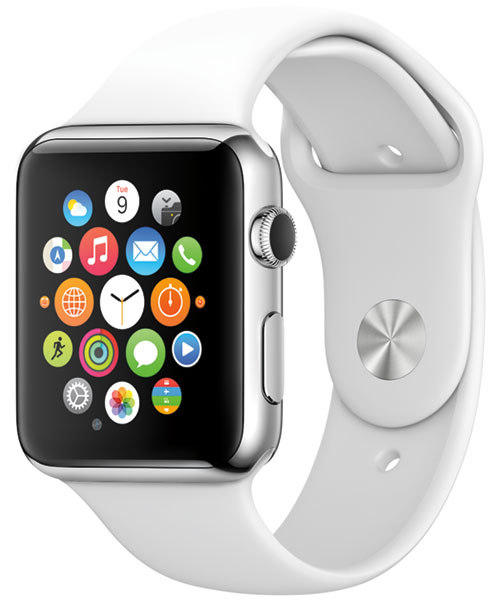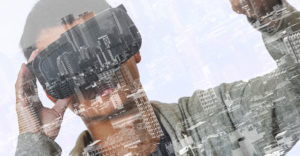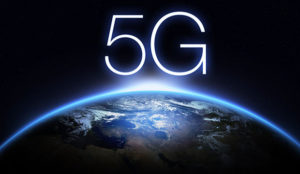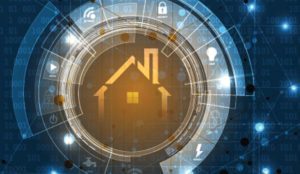While the cellphone, with its constantly updated and accurate clock, nearly killed the wristwatch, the Apple Watch gizmo actually will revive it. In fact, I think the attention that the Apple Watch will bring to our wrists will spark sales of traditional watches.
Why?
I believe there is a latent desire to have a wristwatch — to have the convenience of the time on your wrist without the need to pull out your smartphone and ignore the world around you. I think — hope — that the Apple Watch actually will lead people to slow down the movement of hand to pocket and pocket to face.
Look Who’s Here
Right now, we’re constantly engaging with people around the world through screens, but utterly ignoring those next us — even our families. We check our weather apps before we think to look at the sky.
Walk through a college campus, a park, a school — and the dominant posture is of a human looking at a smartphone.
A wristwatch, though, is somehow more rooted in the here and now, as well as in the past — was it a gift? Yet watches also speak to the future. A sense of when. A reminder about when you’ll be doing your next thing.
The clock on a smartphone doesn’t command this same effect. Maybe this is too subtle for a generation of kids, but I’m not so sure. Watches are part style, part talisman, part getting dressed for the day and having a broader awareness of what you’re doing — not what you’re messing with on a bright and shiny screen.
I am certain that some men, for instance, will look at the soft and gentle curves of the Apple Watch, at the bouncy emoticons, at the gentle bands, and instead will turn to a more traditional watch. They will choose a watch that is not smart — one that is utterly utilitarian. They will choose one that has been crafted and created to exist as a watch and nothing more.
Personally, I’m a huge Apple fan, and I’m already on the lookout for a watch that is not an Apple Watch. I’ll know it when I see it.
Surges vs. Throbs
Meanwhile, something else is going on with the Apple Watch, and I’ll end up buying one because of my job. Sure, I might have to replace the softly pretty bands with one that I have to hand-forge from barbed wire, but I’ll buy one — and I’ll attempt to use it in all of its high-maintenance gotta-charge-it-every night way.
That’s because it’s the real beginning of something radically new. So what is radically new? What is the innovation that truly matters?
It’s not Apple Pay through a watch. It’s not tickets and passes through a watch. It’s not maps on your wrist with turn-by-turn vibration directions. The most important thing doesn’t have anything to do with HealthKit or the Health app or how many stairs you climb in a day. It won’t even be the ability to monitor blood sugar, or access health or sickness indicators through your skin.
The most important catalyst to come out of Cupertino will be communication. It has to do with bringing humans closer together through touch — Apple’s so-called Taptic Engine will be key.
The Taptic Engine produces haptic feedback through taps and vibrations. The duration and strength of taps and vibrations will produce different kinds of recognizable sensations for different kinds of activities. If you press down on the display, you can feel the Apple Watch react. If you turn the Digital Crown in a particular app, you can feel something aligned with the action you’re performing on the screen in an app.
Apple has combined different kinds of engagement with subtle audio cues, too. It’s this sort of haptic engagement that might keep a good many people from ditching their exercise efforts, for instance.
Today, many people who buy fitness bands abandon them within weeks. If your fitness apps communicate through touch and vibrant sound, the Apple Watch has the potential to create sustainable habits. Think Pavlov’s dogs for humans or Charles Duhigg and The Power of Habit.
It has danger, of course, because walking by a Starbucks could produce a special little tickle and result in a surprising price on a new seasonal cup of coffee that then rewards you with a blast of sugar and caffeine. Pretty soon your coffee habit is even more powerfully connected to your life.
Still, where there is darkness, there also is light. Communication.
Apple is trying hard to turn the Apple Watch into a device people use to communicate with in intimate ways. The ability to send your throbbing heartbeat to a loved one is a good example of that — at once cheesy and stupid… until your wife is laying in bed in a hospital far away while you’re back at home taking children to soccer and struggling to keep the kids engaged with homework.
This sense of remote touch has the power to connect us far more intimately than FaceTime, far more intimately than text and multimedia messages.
Apple’s little drawings that you can send to another Apple Watch user are silly right now, but what about in a few years, when you might be able to run your finger over the wrist band and send the feeling to your spouse while you’re working late at night yet again? What if you could squeeze your wrist so your son could feel it before a big event while you’re traveling on business?
We are so far apart these days, and the Apple Watch will be a catalyst to bring us closer together.
Love and Then Some
Enough with the love, right — there’s far more at play with communication than simply missing someone.
Imagine how Apple’s Taptic Engine could be used to create sensations at a concert. You already can feel the energy in the air and sometimes the music itself, but what if you could feel the beat more directly, in tune with your eyes and ears?
What if you go to a NASCAR race and can feel the thrum of your favorite driver’s engine as the car dives into corners and throttles out to pass?
What if your favorite hockey player’s stick sent tactile feedback to thousands of fans as it tapped and controlled the puck before a powerful goal shot? Tap tap tap, the defense is raging, and BAM — the goal shot.
The Apple Watch is the start of feeling what fans are already seeing.
This sort of immersive communication is far from the masses right now, but the Apple Watch will become the most important catalyst. At some point, a scary movie is going to reach out and touch viewers — even in the comfort of their own homes — to ratchet up the suspense.
The key isn’t retrofitting entire stadiums or movie theaters with vibrating chairs. It’ll come from developers and the Apple app ecosystem, and the size of the Apple Watch market will become the least common denominator that will drive the experience and potential for profit.
Communication through the Apple Watch will start out small and intimate — and then it will percolate into mass communication.
This is why I believe the Apple Watch is such a game changer. Fashion? It’s just a speed bump on the journey to something else entirely.






















































